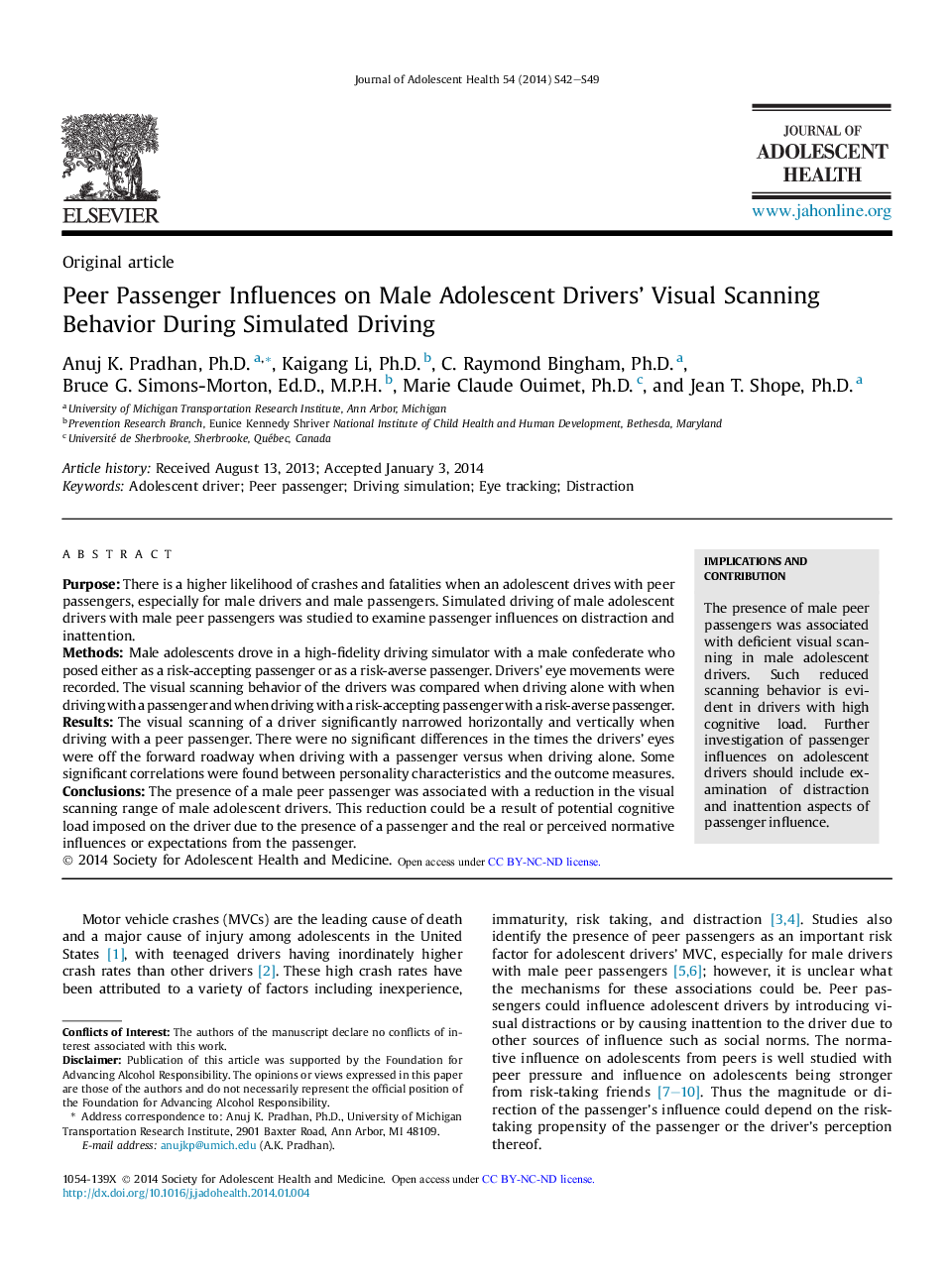| Article ID | Journal | Published Year | Pages | File Type |
|---|---|---|---|---|
| 1078780 | Journal of Adolescent Health | 2014 | 8 Pages |
PurposeThere is a higher likelihood of crashes and fatalities when an adolescent drives with peer passengers, especially for male drivers and male passengers. Simulated driving of male adolescent drivers with male peer passengers was studied to examine passenger influences on distraction and inattention.MethodsMale adolescents drove in a high-fidelity driving simulator with a male confederate who posed either as a risk-accepting passenger or as a risk-averse passenger. Drivers' eye movements were recorded. The visual scanning behavior of the drivers was compared when driving alone with when driving with a passenger and when driving with a risk-accepting passenger with a risk-averse passenger.ResultsThe visual scanning of a driver significantly narrowed horizontally and vertically when driving with a peer passenger. There were no significant differences in the times the drivers' eyes were off the forward roadway when driving with a passenger versus when driving alone. Some significant correlations were found between personality characteristics and the outcome measures.ConclusionsThe presence of a male peer passenger was associated with a reduction in the visual scanning range of male adolescent drivers. This reduction could be a result of potential cognitive load imposed on the driver due to the presence of a passenger and the real or perceived normative influences or expectations from the passenger.
